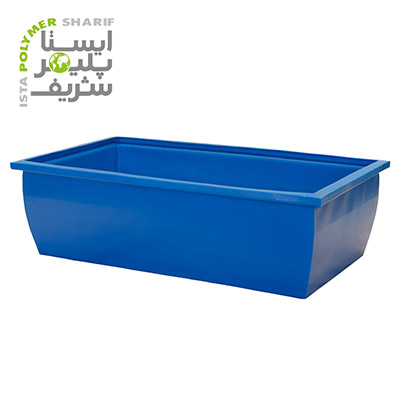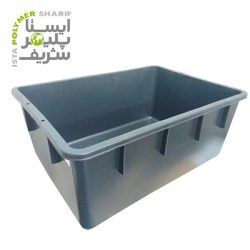Electroplating is an industrial process that is increasingly successful and growing. The aim of electroplating is to increase resistance, decoration, reduce production costs, and more on metallic or non-metallic parts. The use of electroplating in modern industries is of utmost importance, with many industries employing this method, including the automotive industry, electronics manufacturing, construction industry, door and window manufacturing, and others.
Characteristics of Polyethylene and Polypropylene Electroplating Tub
An electroplating tub is a device widely used in the agricultural, livestock, and similar industries. It is also used in fish and aquatic animal farming. Additionally, it is used for household purposes, such as children’s play pools and bathtubs.
Polyethylene and polypropylene tanks are the latest polymer products after polyethylene tank and polypropylene tank, produced by domestic experts and engineers. Although these products have been prevalent in some foreign countries for a long time, these tanks have demonstrated superior performance and durability compared to other products and tanks used previously, thanks to their extraordinary and unique design.
The polyethylene used in the production of electroplating tub is polyethylene 3840, produced from the combination of ethylene monomers, commonly known as plastic. The material of these polyethylene tanks provides high impact resistance, and their smooth and polished internal and external surfaces aid in hygiene and cleaning.
Polyethylene tanks are produced using the latest molding technology, ranging from 60 to 2000 liters in volume. In addition to being sturdy, these tanks are lightweight and highly resistant to UV rays from sunlight, making them suitable for use in many industries.
The most important feature of the electroplating tub is its durability, which is due to the use of extrusion welding in its production.
| Dimensions of Polyethylene Tanks | |||
|---|---|---|---|
| Type of Polyethylene and Polypropylene Electroplating Tub | Length (cm) | Width (cm) | Height (cm) |
| 60-liter Electroplating Tub | 73 | 73 | 17 |
| 100-liter Electroplating Tub | 97 | 55 | 26 |
| 150-liter Electroplating Tub | 82 | 69 | 41 |
| 200-liter Electroplating Tub | 98 | 66 | 51 |
| 500-liter Electroplating Tub | 138 | 84 | 63 |
| 700-liter Electroplating Tub | 148 | 100 | 79 |
| 800-liter Electroplating Tub | 122 | 116 | 78 |
| 1000-liter Electroplating Tub | 194 | 83 | 71 |
| 1300-liter Electroplating Tub | 212 | 122 | 79 |
| 1500-liter Electroplating Tub | 213 | 115 | 91 |
| 2000-liter Electroplating Tub | 248 | 135 | 87 |
Applications and Advantages of Polyethylene Tanks
Water and electroplating tub made from polyethylene and polypropylene are corrosion-resistant, making them ideal for various electroplating tub. These tanks have many applications, such as storing water for livestock in the animal husbandry industry or being extensively used in fisheries and aquaculture. However, the electroplating industry, which is the most widely used industry in the country, uses these tanks to coat the surfaces of objects with thin layers of usually metal to resist corrosion (rust).
The production of polyethylene electroplating tub includes anti-UV materials, which allow them to be used outdoors without damage from sunlight for approximately ten years. Additionally, polypropylene tanks are made from Polystone® P homopolymer sheets, which, like polyethylene tanks, are highly resistant to corrosion, chemicals, and heat, making them ideal for electroplating tub production. The strong and durable body of polyethylene and polypropylene electroplating tub, along with the ability to install various fittings for input and output on the body, makes them excellent products. One of the most important properties of these tanks is their non-conductivity to electricity.



